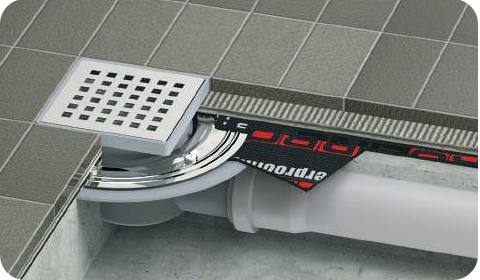 Before you do a flat roof, it is important how will be the water drainage. From flat roofs is the slope of 2-5%, so the drainage should not cause any problems. In contrast to conventional pitched roofs, where the water flows itself, have flat roofs there are some nuances. The remaining surface water is not critical, but when the water freezes, there is a high probability that could damage the coating.
Before you do a flat roof, it is important how will be the water drainage. From flat roofs is the slope of 2-5%, so the drainage should not cause any problems. In contrast to conventional pitched roofs, where the water flows itself, have flat roofs there are some nuances. The remaining surface water is not critical, but when the water freezes, there is a high probability that could damage the coating.
To the surface of the roof remained dry with abundant rainfall, you should pay special attention to the drainage. Can be used in combination with other drainage trap, which would guide water into the waste pipe, after which the water enters the soil or the sewage system, perhaps even in a special container. To ensure that the outflow water was carried out efficiently, the ladder is placed in the lower part of the roof and must be made with a slight slope. Ladders should be few, if clogged main, and they all need to be connected to a single pipe.
 The place where it will be mounted the ladder should be sealed to prevent moisture penetrate under the roof. Just the two-block ramp with clamping flange and bitumen membrane is perfect for this task. A bituminous membrane acts as an additional waterproofing.
The place where it will be mounted the ladder should be sealed to prevent moisture penetrate under the roof. Just the two-block ramp with clamping flange and bitumen membrane is perfect for this task. A bituminous membrane acts as an additional waterproofing.
 In the calculation of the drainage system should take into account the roof area, the level of atmospheric precipitation in the region of residence, the level of inclination of the roof slopes.
In the calculation of the drainage system should take into account the roof area, the level of atmospheric precipitation in the region of residence, the level of inclination of the roof slopes.
The flat roof provides a number of advantages because it can accommodate a recreation area, make the garden or a full residential floor, and more, depending on the imagination. So many developers in the private sector prefer this option.